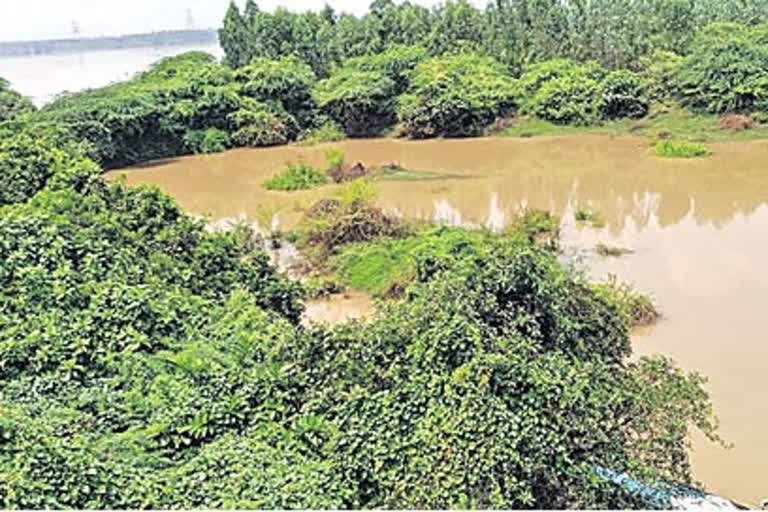Hyderabad (Telangana): The River Godavari hailed as South Ganga is turning poisonous due to the indiscriminate discharge of industrial effluents in Telangana. The tributaries of the Godavari flowing between Basara and Bhadrachalam areas are heavily loaded with effluents as well as sewage discharge. When these tributaries confluence with the Godavari, the river gets polluted.
The sewage and industrial effluents as far as the estuary of Godavari thus contaminating the coastal regions also. The aquatic life both in the river and the sea suffer major damage due to this unmindful pollution of the river.
Recently, ETV Bharat and Eenadu travelled along the river bed to assess the impact of this pollution. The team studied the impact of pollution from 50 canals including River Godavari and her tributaries. The Pollution Control Board statistics were also studied and the final picture gives an alarming situation.
Basara is located at a distance of 5 km from Dharmabad in Maharashtra. There is a liquor company that is releasing untreated industrial effluents into the Godavari. The effluents are stored in the industrial premises entire year and released into the river during monsoons. At Ramagundam, more than 40 MLD (millions of litres per day) of sewage and industrial waste are flowing into the river. Another 40 MLD of sewage is coming from Dharmapuri, Manthani towns and villages.
In Mancherial town, the Sewage Treatment Plant constructed 18 years ago is dysfunctional. The sewage is flowing from the town into Rallavagu and from there into the Godavari. At Gaudicharla, the Nakkavagu Sangareddy District Hatnur Zone, which carries the polluted waters of the Patancheru Industries, meets the Manjeera at Gaudicharla. The industrial waste flowing in tributaries has already contaminated the well water at Bachchulagudem.
All the sewage in the town of Bhadrachalam meets the Godavari from six canals. There is literally not a single treatment plant across these areas. At Bourgampadu, chemical effluents from industry in Sarapaka are flowing into the Godavari.
Sewage is coming from over 50 canals in the Godavari basin. Out of 249 MLD of water used per day, 199 MLD of sewage enters the river without treatment. This situation is even more worse in the tributaries. There are six towns and areas in the river basin that generate more than 10 MLD of wastewater per day.
Sewage treatment plants have been set up in some places but are not working due to maintenance issues. Sewage treatment plants with a capacity of 18 MLD in Ramagundam, 6.5 ML in Manchiryala and 2 MLD in Bhadrachalam are not functioning. Basara, Dharmapuri, Nirmal, Lakshettipeta, Manthani and Sarapaka regions do not have a proper drainage system. There are no sewage treatment plants in these regions either.
With so much sewage and industrial effluents flowing into the arterial river, the water quality is turning precarious in Telangana. Timely action and collective responsibility of people and authorities alone could save the life-giving river.



